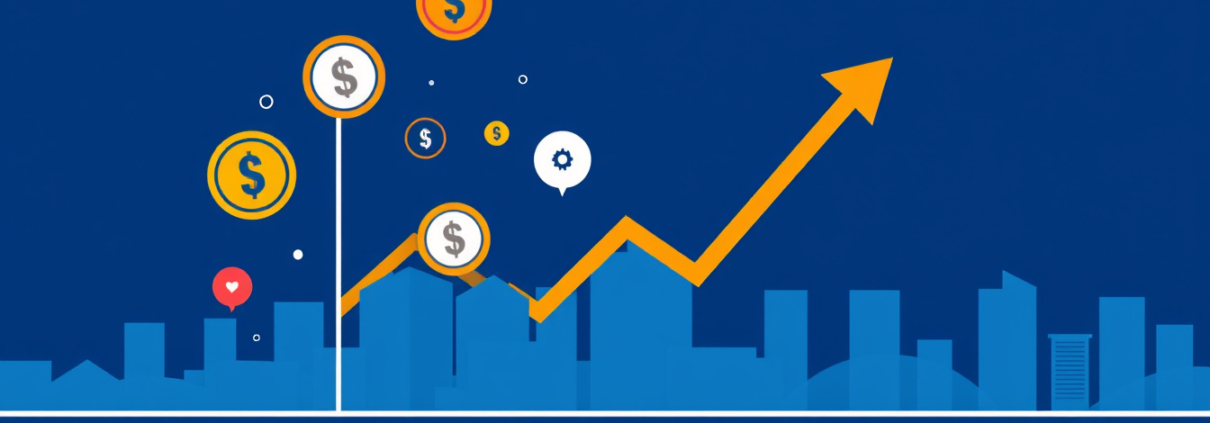π Steps to Take as the Economy Enters a Period of Shallow Contraction
The global economy now shows signs that many experts call a shallow contraction. The slow economy, rising debt, and market shakes bring challenges that need smart moves. We must learn the contractionβs form and get ready to steer through these hard times.
Understanding the Economic Landscape
For the past 14 years, easy money rules let central banks and governments pump cash into markets. This steady cash flow made a huge financial asset bubble. Global financial assets reach about $600 trillionβnearly six times the global GDP. This ratio is far higher than the usual two times GDP of the past.
The path now shifts. The end of easy money plus growing debt puts heavy strain on the economy:
- Debt Bubble: Global debt grows fast after years of low-rate loans and money expansion. When this debt bubble breaks, it can cause sharp economic shocks.
- Market Volatility: Prices in key markets, like NASDAQ and the S&P 500, have fallen more than 30%. More drops may come before signs of calm appear.
- Demographic Downturn: The largest group, baby boomers, spent most in 2007. As demographics change, consumer spending and growth fall.
- Inflation and Interest Rates: Rising prices, partly from long stimulus, push banks to raise rates. This change makes loans more costly and slows growth.
What to Expect in the Upcoming Months
Some see a bounceβa quick lift after the fallβand think the worst has passed. Experts, however, say the bounce will not last long. They expect another decline by late 2023 or early 2024. The pattern may be:
- First Wave Down: Major markets drop by 30-35%.
- Second Wave Bounce: A short rise of 40-50% that may seem like a recovery.
- Third Wave Down: A long dip that can match or beat the first crash.
- Fourth Wave and Final Recovery: The last hit to the economy before a slow pick-up in 2024-2025. A multi-wave fall is common when large bubbles break before a true recovery starts.
Steps to Take During Shallow Contraction
1. Assess and Protect Financial Assets
- Spread Your Investments: Do not put all your money in overvalued areas like certain real estate or stocks.
- Pick Strong Companies: Look for firms with solid balance sheets, steady cash flow, and good models.
- Keep Cash Nearby: Hold enough funds to take advantage of chances and meet sudden needs.
2. Manage Debt Carefully
- Cut High-Interest Debt: Lower credit card and other costly debts as rates climb.
- Hold Off on New Debt: Borrow less, especially when terms look risky.
3. Reevaluate Major Purchases
- Watch the Housing Market: Home prices have shot up, with US median prices tripling in twenty years. Experts expect sharp price drops, sometimes falling by nearly half.
- Postpone Large Buys: Delay buying homes or big assets until the market finds balance.
4. Budget with Flexibility
- Plan a Simple Budget: Expect lower income or sudden costs.
- Save an Emergency Fund: Try to cover 3-6 months of expenses.
5. Stay Informed but Avoid Panic
- Check Trustworthy News: Get updates from solid economic sources.
- Steady Your Reactions: Ups and downs are part of the cycle; calm, careful steps beat rash moves.
6. Plan for the Medium to Long Term
- Know that a quick fix is unlikely; the economy may stay low until debt and demographic gaps slowly adjust over years.
Conclusion
Economies now face a period when big financial bubbles shrink and demographic shifts affect demand. A soft end to these troubles is not near, but knowing the steps of the contraction can help people and groups plan better. Taking solid actions to guard financial health, cut debt, and keep plans flexible will help weather the hard times ahead.
FAQs
Q1: Why might this downturn be deeper than past recessions?
The recent downturn comes after over ten years of strong cash flow rules. That time caused high debt and soaring asset values. When these bubbles burst, the drops can be stronger and last longer.
Q2: How do demographic changes affect the economy?
The big group of aging baby boomers now spends less, which cuts down on overall demand. Until younger people spend more, growth may stay weak.
Q3: Should I sell my investments now to cut losses?
Not necessarily. Some assets may fall, but selling during a drop may lock in losses. Check your own finances, spread risk, and talk to a financial guide before big moves.









